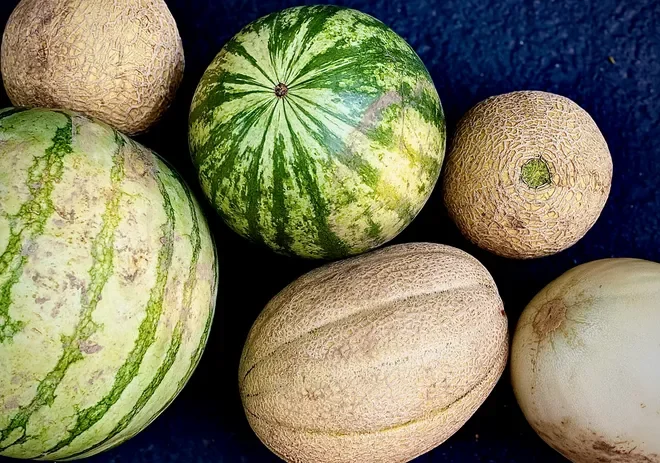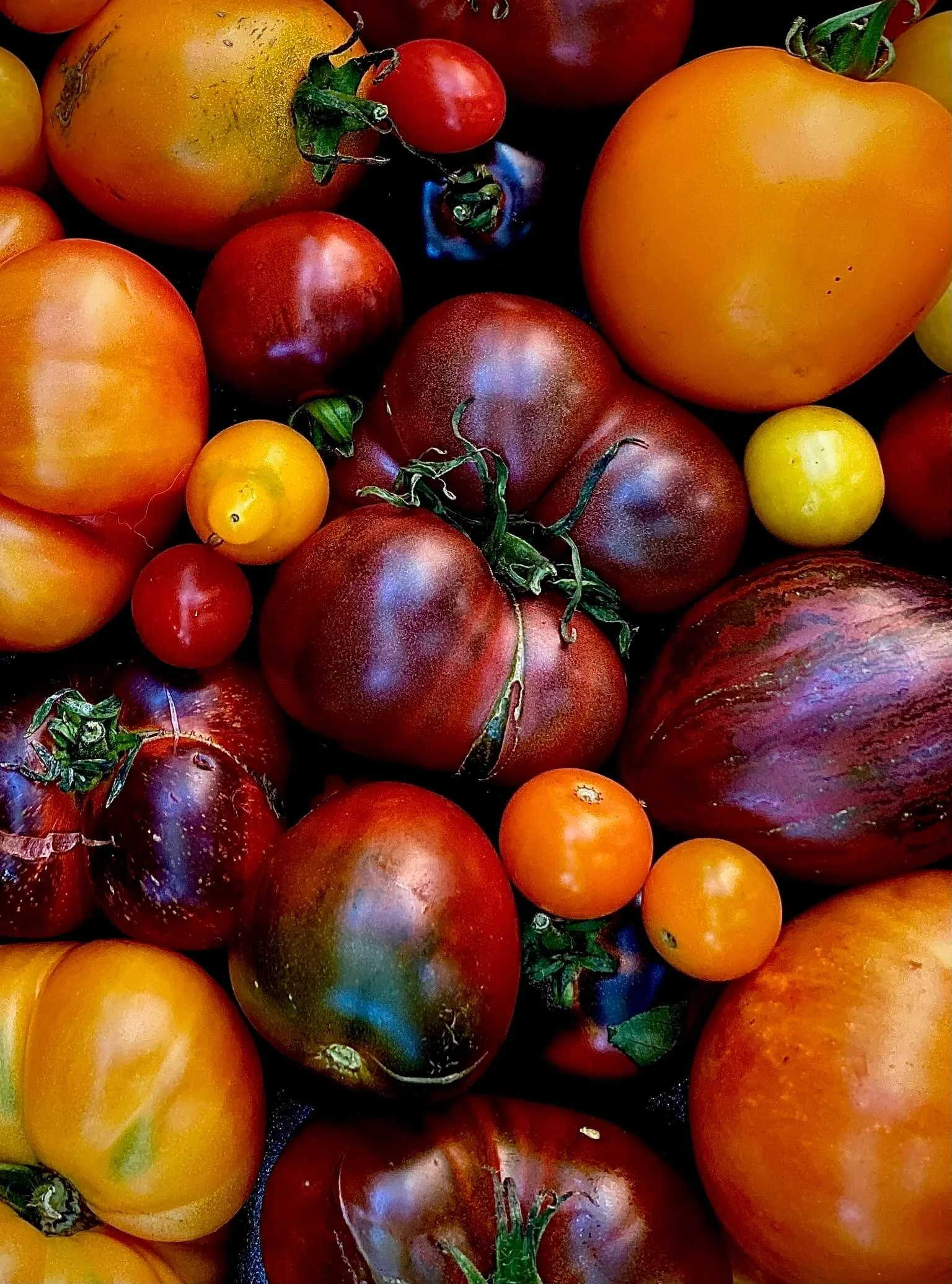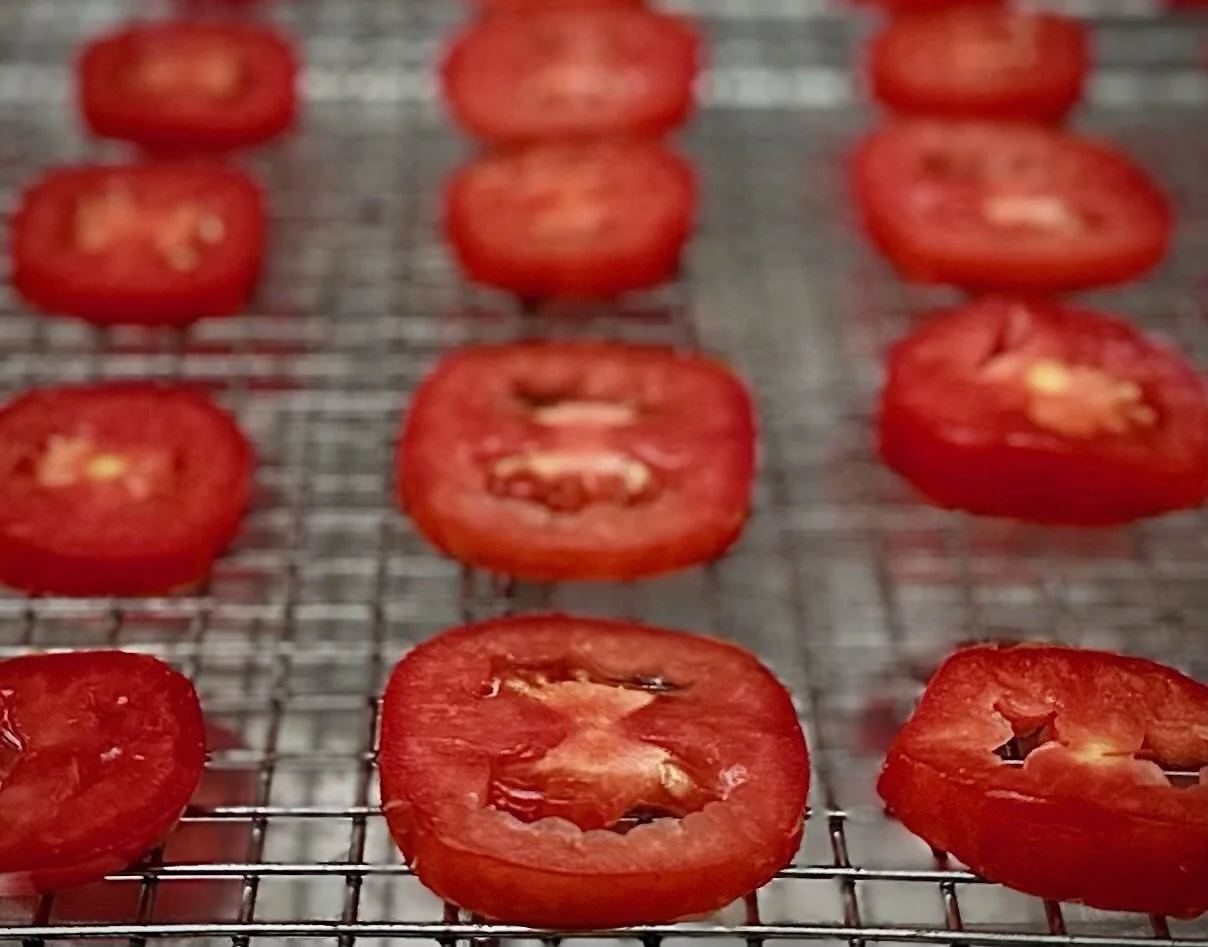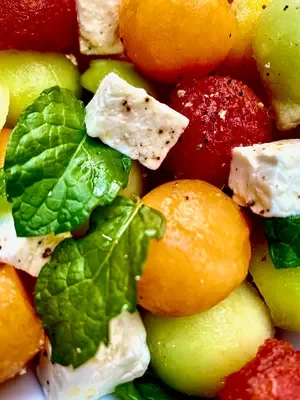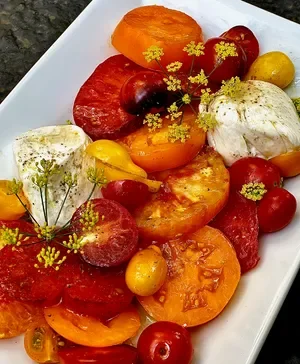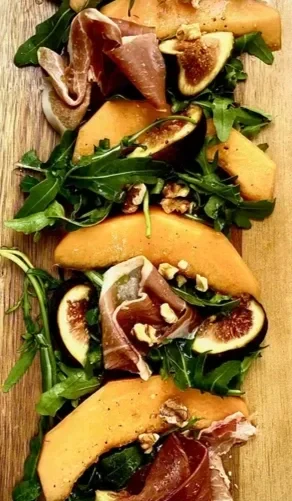Using Your Melon — and Tomatoes
Special to The Detroit News
Gardens are a lot of work, and there’s always more to be done. And because I put in the work, I shouldn’t be surprised that my summer gardens offer up fruits and vegetables through fall, especially while it’s still technically the growing season.
My garden, along with farmers markets, are flush with rainbow-colored produce displays. Still going strong are cantaloupe, tomatoes and watermelon.
At this time in my backyard growing cycle, I still have plenty of tomatoes and a variety of melons. Chilled soups and salads bursting with summer flavors stay on my mind and menus.
Most garden enthusiasts germinate seeds in March. By September, many of us agree, it’s already been a long season. We prune, nourish, water and weed plants for months, and in return, the garden nourishes us right back. But once the days get shorter and kids head back to school, it feels like summer is over. But the garden says otherwise.
We expect crops like kale, broccoli and hard squash to thrive in cooler weather, which have yields through the first frost. What’s surprising right now are those workhorses that still have me collecting fruits every day.
My garden, along with the farmers markets, are flush with rainbow-colored produce displays. Still going strong are cantaloupe, tomatoes and watermelon. According to the produce availability guide on Michigan.gov, I’ll have watermelon and cantaloupe until the end of September. I can also expect to collect tomatoes through October, if it doesn’t get cold too fast.
I know as Michiganians we savor every last warm day on the calendar. But as a chef, I also look forward to the flavors that change with the season. It gets repetitive serving melon at every meal and eating so many tomatoes. I’m ready for rich fall flavors and hearty meals. But I can’t move on to those while still gathering so many summer fruits. I don’t have the heart to let it go to waste, so I get creative.
I give produce away, donating to friends and family. I search the internet for interesting ways to cook things. I serve watermelon feta salads, pastas with fresh tomato sauce, and mojito marinated fruits. I make different soups like chilled melon or watermelon gazpacho. For the next couple weeks, we’ll have our fill of tomato mozzarella salads and melon with prosciutto creations.
I process and freeze tomatoes to extend their shelf life. I also slice and dehydrate them, which sweetens and concentrates their flavor. Dried, they last a long time, and are delicious on pizza, salads, or in pastas. Extra-ripe tomatoes are perfect for tomato soup. I roast them first, to deepens their flavor and add another layer of richness to the soup.
It can be served warm or cold, and is worth the effort of doubling the recipe. Freezing half the batch keeps it available to partner with a warm grilled cheese sandwich come fall.
As my soup cooks, I consider this year’s garden. I assess what did and didn’t work, and go outside to take a few photos. The images will be more reliable than my memory over the winter. I create a list of where I plant things, which plants to relocate, and which beds to rotate. I identify the spots where there’s room for more items, and the places where there should be less, and devise a plan to close the garden down. It’s a sizable job, as much as setting it up, but skipping it is not an option. Unless I want double the work next spring.
Once this season finally ends, I move a few plants inside and pull up any bolting herbs. I harvest all remaining fruits, and uproot any end of cycle annuals. I remove any debris that invites insects and disease and could be problematic next year. I clean all the dirt off of my tools to prevent rust, and store them for the winter. I fill any pots that sink with good, fertilized soil. There’s nothing better than walking into spring with garden beds that have full, fluffy beds.
Making a list of seeds for next year, I remind myself of optimal planting dates, in an effort to prevent excessive processing demands. I make the same promise to myself I do after each season, which is not to over order for next year. But it’s a promise I inevitably break, once it’s time start growing seedlings again.
I will forget about all the cooking, pickling, canning and freezing, and grow them anyway. Because what I love even more, is the idea of cooking with things I either grow or buy from a farmer. Regardless of all the work involved, I’ll be pining again for summery days like this one. Where I have too many ripe tomatoes, and an abundance of melons on the vine.
Melon Ball Salad With Feta and Mint
4 cups of melon flesh, such as watermelon, cantaloupe, honeydew or a mixture
¼ cup mint leaves
¼ cup feta, cubed
2 teaspoons fresh lime juice
1 tablespoons olive oil
Kosher salt
Fresh ground pepper
Cut the melon flesh into balls using a melon baller, or into squares by knife, and place in a bowl. Mix in the mint leaves and feta, then drizzle with lime juice and olive oil. Season with salt and pepper.
Makes 4 servings.
Chilled Melon Soup
(adapted from marthastewart.com)
2 English cucumbers, peeled, seeded and cut into 1-inch pieces
½ honey dew melon, peeled, seeded and cut into 1-inch pieces
½ cup fresh lime juice
1 cup mint leaves
2 cups crushed ice
Kosher salt
Working in batches, puree the cucumbers, melon, lime juice, mint and ice in a food processor. Season with salt. Transfer to a bowl, cover and refrigerate for at least 2 hours. Serve with lime wedges and mint.
Makes 6 to 8 servings.
Watermelon Gazpacho
(adapted from marthastewart.com)
1 small seedless watermelon, cut into large pieces
3 tablespoons lemon juice
1 to 2 small jalapenos, ribbed and seeded cut into 1-inch large pieces
Kosher salt
½ teaspoon sugar
In a food processor, puree the watermelon, lemon juice, ½ teaspoon of salt and the sugar until well combined. Add the jalapeno pieces, and pulse 2 to 3 times until chunky. Refrigerate at least two hours. Stir before serving.
Makes 3 to 4 servings.
Tomato and Burrata Salad
3 to 4 ripe large tomatoes
1 pint of cherry or grape tomatoes, halved
4 ounces of burrata or mozzarella cheese
Fresh herbs for garnish (optional)
Balsamic vinegar
Good olive oil
Kosher salt
Fresh ground pepper
Cut the large tomatoes into slices, and the small tomatoes in half. Arrange with burrata or mozzarella cheese on a platter. Garnish with fresh herbs, and drizzle with balsamic vinegar and olive oil. Season with salt and pepper.
Makes 4 servings.
Cantaloupe, Fig and Prosciutto With Balsamic Vinegar
2 cups fresh arugula or spring mix lettuce
½ ripe cantaloupe, peeled and seeded
6 fresh figs, cut in half
1 ounce prosciutto
¼ cup toasted walnuts
¼ cup basil leaves
Good olive oil
Balsamic vinegar
Kosher salt
Fresh ground pepper
Spread the lettuce across a platter in a layer. Cut the melon into wedges, and place on top of the greens. Wedge the fig sections and prosciutto decoratively around the melon slices. Garnish with toasted walnuts and basil leaves. Drizzle the salad with olive oil, balsamic vinegar, and season with salt and pepper
Makes 4 to 6 servings.
Hot or Cold Rustic Tomato Soup
2 pounds ripe tomatoes
6 whole garlic cloves, smashed
1 teaspoon fennel seeds
1 tablespoon of tomato paste
6 tablespoons olive oil
Kosher salt
Fresh ground pepper
4 cups chicken stock
4 sprigs basil
Parmesan rind, wrapped in cheesecloth (optional)
1 cup country style bread, crust removed, torn into pieces
2 teaspoons sugar
¼ teaspoon balsamic vinegar
Preheat the oven to 400 degrees. In a glass baking dish, toss tomatoes, garlic, fennel seeds, tomato paste and oil. Roast until tomatoes are browned and juices thicken, stirring occasionally, around 30 minutes. Transfer the tomatoes into a large pot, and add the chicken stock, basil, parmesan rind and bread. Bring to a boil, then reduce heat. Simmer 20 minutes, stirring occasionally and breaking up the bread. Remove the parmesan rind. Puree the soup and chill, or leave whole to serve hot. Add the sugar and balsamic vinegar, and additional salt if needed.
Makes 4 to 6 servings.
This story originally appeared in The Detroit News in September 2022.

